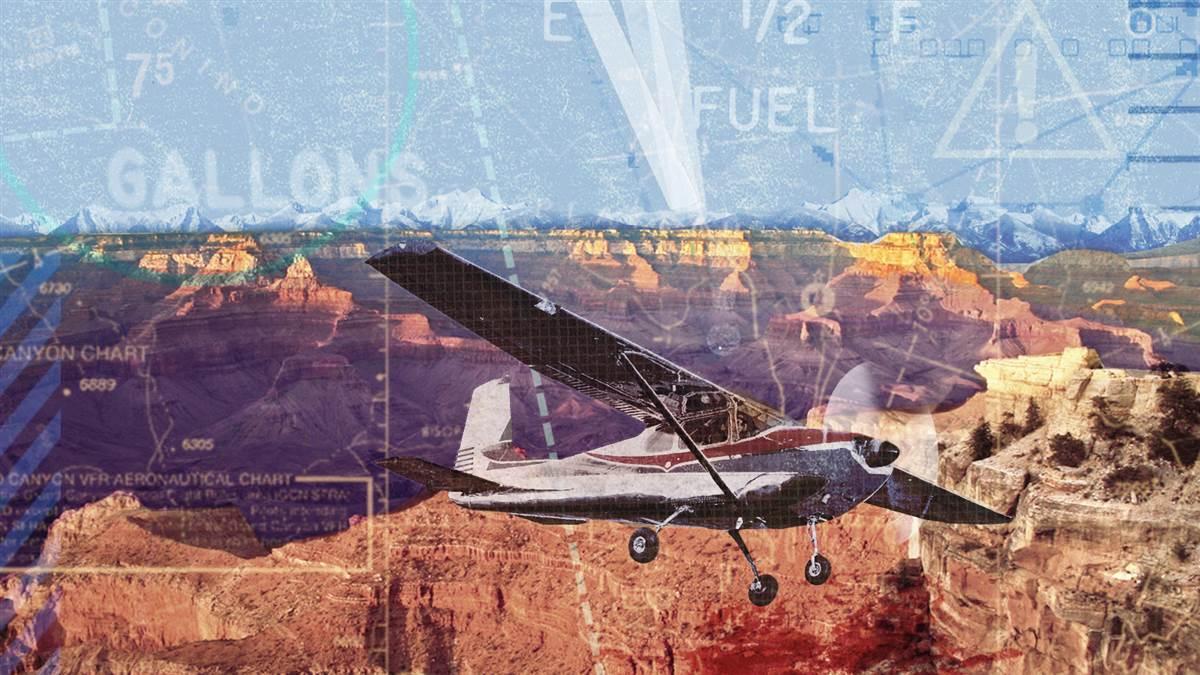Flight Lesson: Scenic diversion
Running dry in Vegas
By Dave Houghton
Fall is a wonderful time to fly in the Rocky Mountains. Summer thunderstorms have moved on, the air is clear and cool, and aspen trees splash electric gold across the landscape. My business partner, August, and I were scheduled to attend an engineering conference in Las Vegas, so we planned on flying there from Gunnison, Colorado, in my Cessna 182 RG Turbo.

At the time of this flight in September 2007, Sierra Fox had analog gauges and a King 89B GPS with a tiny orange dot-matrix screen. I had just more than 400 hours total time, and although I was VFR-only, I had more than 300 hours of flying in and around the mountains and canyons of Colorado, Utah, and Nevada. I plotted a straight-line course to Henderson Executive (HND) but figured we might wander a bit to get a good view of the Grand Canyon, a dozen or so miles off-route to the south.
My standard preflight included fuel to the “bottom of the necks,” which gave me about 75 gallons usable based on the dipstick. The direct route added up to about 425 nautical miles, which would require 2 hours 45 minutes at 155 knots, and 47 gallons of avgas. (Although the pilot’s operating handbook said the airplane should cruise at about 15 gph, it actually burned more than 17.) This added up to nearly two hours of extra fuel, plenty to handle some scenic diversion and a bit of wind on the nose.
I could tell from our GPS ground speed that we had a headwind—not unusual for that flight direction. We tracked along the north rim of the canyon, making sweeping turns to take in the scenery, eventually resuming a direct course to Henderson. The headwind had been persistent, and our ground speed had stayed around 140 knots or lower. The fuel gauges on the 182 are notoriously inaccurate, and we had no fuel flow meter. We were past three hours of flight time and still some 70 nm from Vegas. As I began our descent, the fuel needles hovered near zero. August said, “Is that OK?” My response was a quick, “Those gauges don’t really tell the story—we should have plenty of gas.” But I was a bit worried.
Boulder City Airport, 13 nm east of Henderson, was 5 minutes closer, but off course. I weighed the option of landing, fueling, and then taking off for a 7-minute flight to Vegas. It didn’t seem like things were that dire, so I soldiered on.
Almost there. I checked in with Henderson Tower and got my instruction to enter a long left base leg for Runway 17 R. Coming up to the turn from base to final, I was uncomfortably distant from the numbers. I had not informed tower of our fuel situation, which still did not seem to qualify as an emergency. As I banked to turn final, the Lycoming coughed and sputtered, a sound I had never heard in any airplane while airborne and hope to never hear again. The engine sputtered through the turn, then as I leveled out for final it came back to life. A minute later the tires squeaked onto pavement and I taxied to the FBO and a long drink of 100LL.
When we finally refueled, the airplane took on nearly 70 gallons to our usual fill level. Lessons learned: Bottom of the necks is less than 75 gallons of usable—dipsticks are sketchy; Top off for a long flight. I could have put another 45 minutes’ worth in those tanks when we departed, with no worries about weight; Headwinds and diversions can add up to more fuel use than you think; Banking the airplane can starve the engine; Better to spend an extra half hour for a fuel stop than run dry; Apply caution in inverse proportion to the accuracy of your fuel measurement devices.
 What happened
What happened

